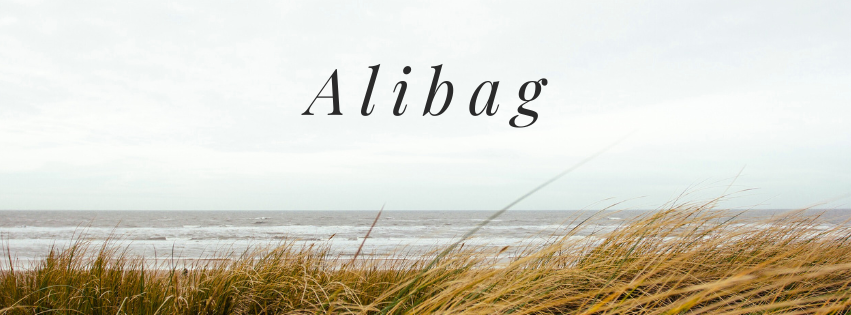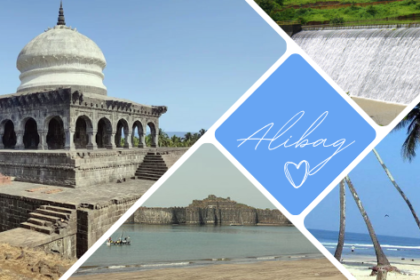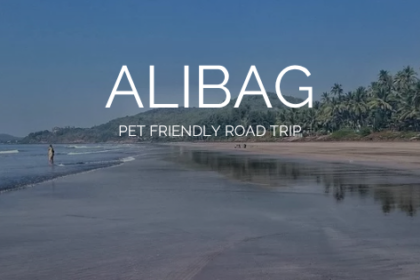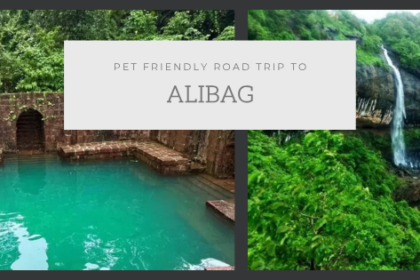Alibag, with its beautiful beaches, historical forts, and hidden temples, is the perfect retreat for a weekend escape. This article describes my 5-day trip to our second home in Alibag back in may 2018. This journey was a blend of exploration, relaxation, and a taste of coastal charm.
The itinerary of the entire trip is mentioned in the table below. You can click on the links in the table to access the blogs of the next days of this trip.
| Click the links below to read the blogs on the next days of this trip: | Before lunch | After lunch |
| Day 1 | Journey from Pune to Alibag | Colaba Fort, Varsoli Beach |
| Day 2 | Siddheshwar waterfall | Kankeshwar temple, Akshi beach, Nagaon beach |
| Day 3 | Revdanda Fort and Revdanda Beach | Shitaladevi temple and Rameshwar temple in Chaul |
| Day 4 | Khokari Tombs in Murud, Nawab palace. | Free time |
| Day 5 | Teenvira Dam | Journey from Alibag to Pune |
Day 1: Pune to Alibag
We set off from Pune early, via Pune Mumbai express highway. We waited for a quick lunch at Hotel Gayatri Garva along the way. It is just a 10 minutes drive from Khalapur toll gate on the Mumbai-Pune express highway. Hotel Gayatri G is our go-to-place whenever we are on the way to Alibag since they allow pets. There is a stream in the back yard of the hotel. There is a huge fenced lawn where dogs can play. They also have clean washrooms and ample parking space.
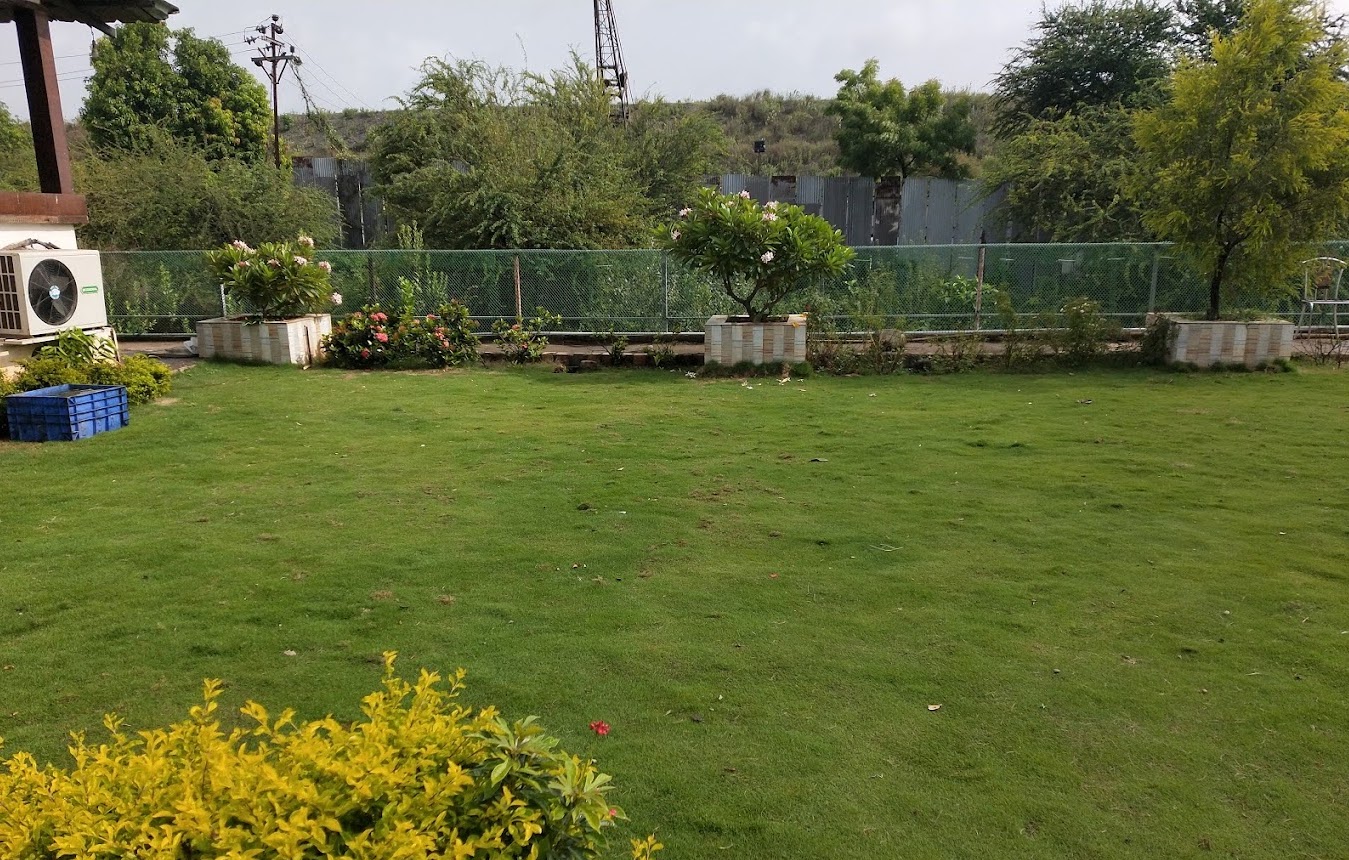

After a heavy meal, we continued our journey to Alibag. By the afternoon, we reached our Alibag home, which greeted us with a familiar, warm ambiance. Since it was just the beginning of monsoon, we could see lush green views of Sagargad from the balcony.
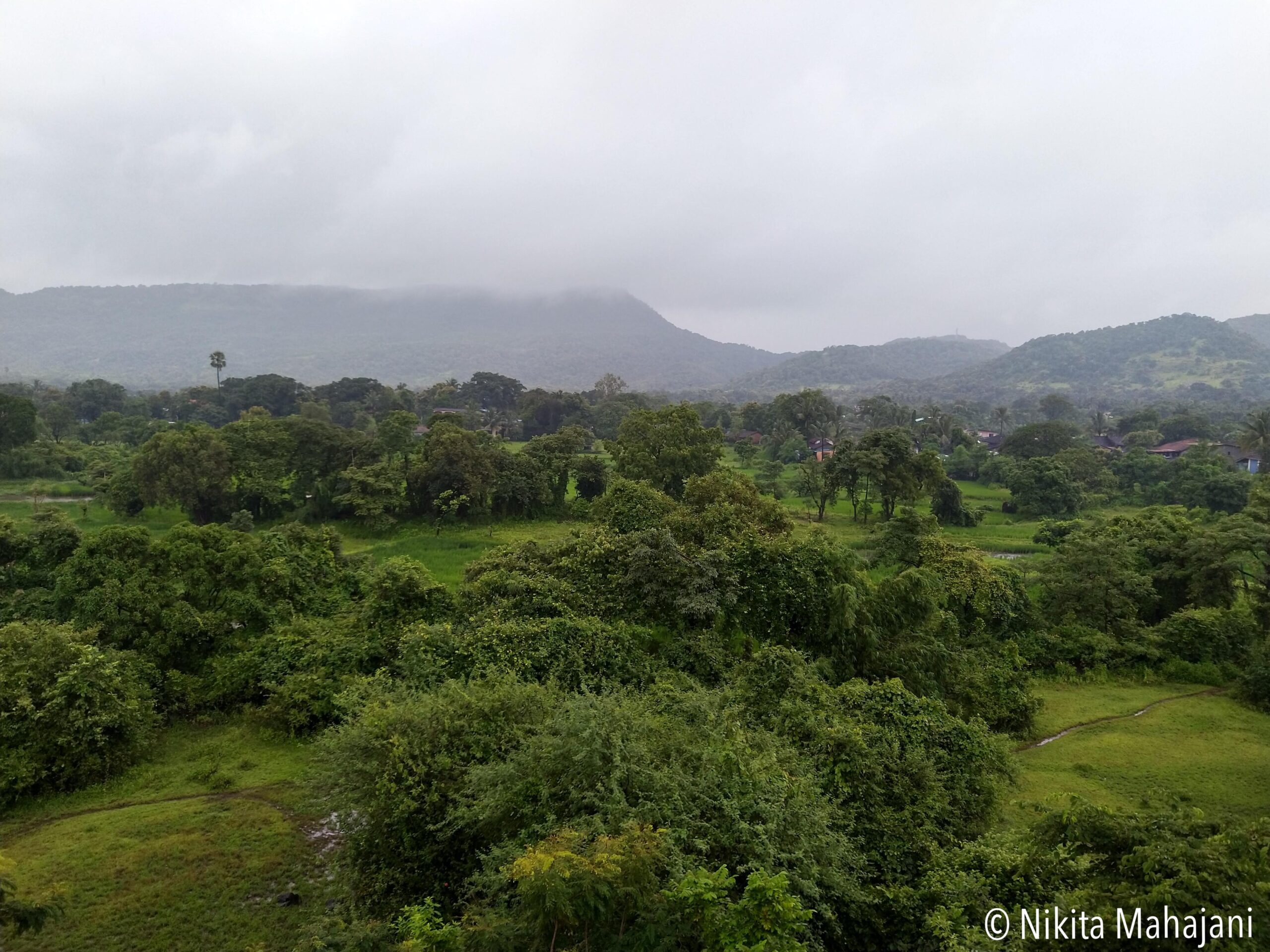
After some rest, we headed out to explore Colaba Fort. It is a sea Fort on Alibag beach. It is accessible by walking during low tide. If it’s a high tide, one can go by boats available at the beach. Horse rides are also available. but the horses are kept in extremely poor condition. Most of the houses are injured and malnourished. Its better to avoid horse rides and not be a part of cruelty to animals. Alibag beach was a peaceful place back in 2018. But now it has become super chaotic due to the large number of horse rides, noisy bike rides and water sports on the beach. Now, its not to impossible to leave pets unleashed in the beach because the congestion caused by noisy bikes rides is worst as compared to vehicular traffic on roads. Alibag beach also has CCTV cameras and a control room on the beach. There are lots of shacks and washrooms in the parking of Alibag beach.
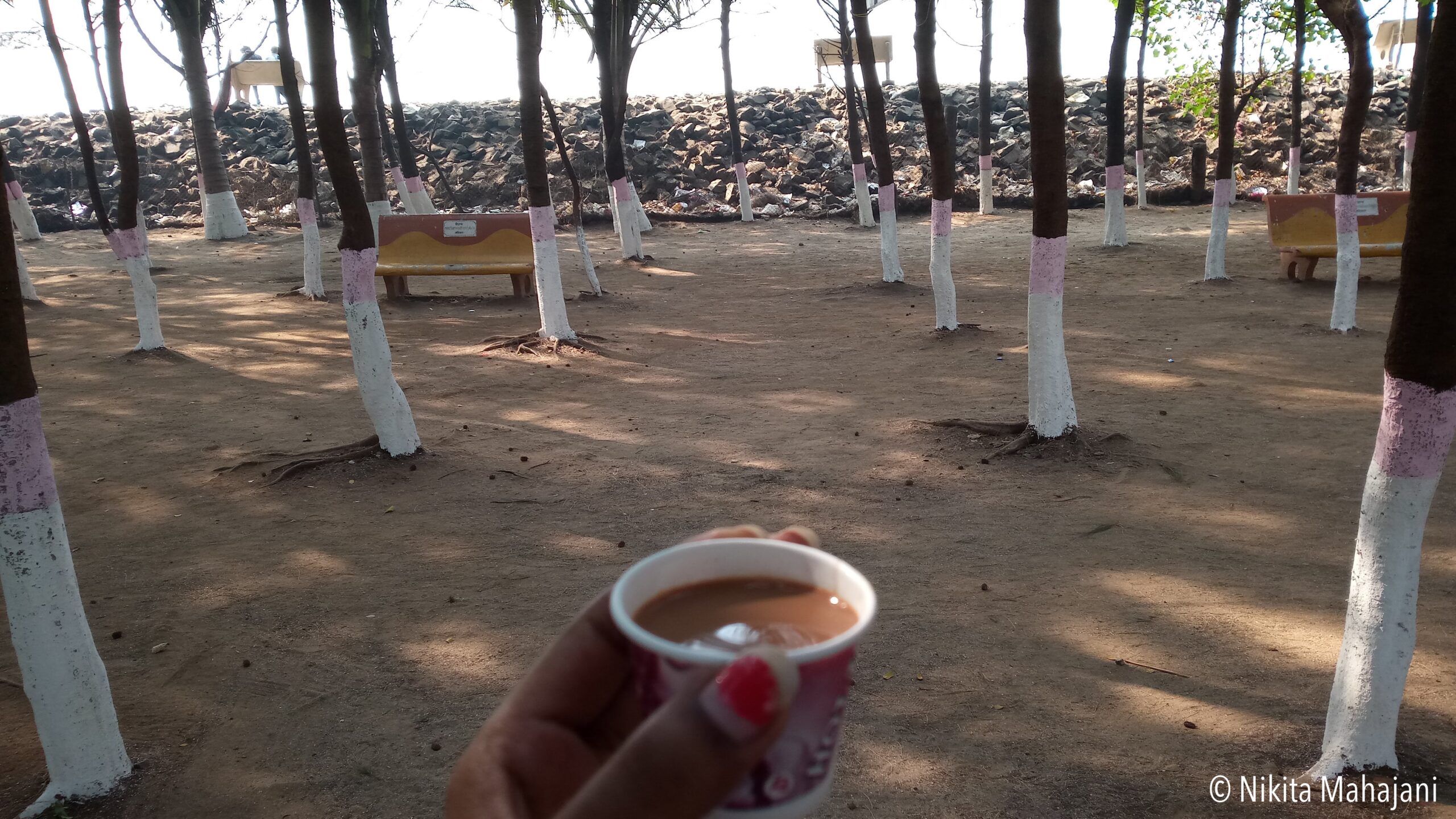
Once you cross the water on the beach, you come across a rocky patch at the entrance of Colaba Fort. There is a ticket counter at the entrance of Fort. Pets are allowed. Some local villagers from nearby areas were selling Ranmeva, a mix of various wild fruits that grow abundantly in the forests. These fruits are served on a leaf with a sprinkle of rock salt and are available at a very affordable price. Their tangy flavour provides a delightful treat for the taste buds.

Courtesy: Bhataku’s Travel Tales!
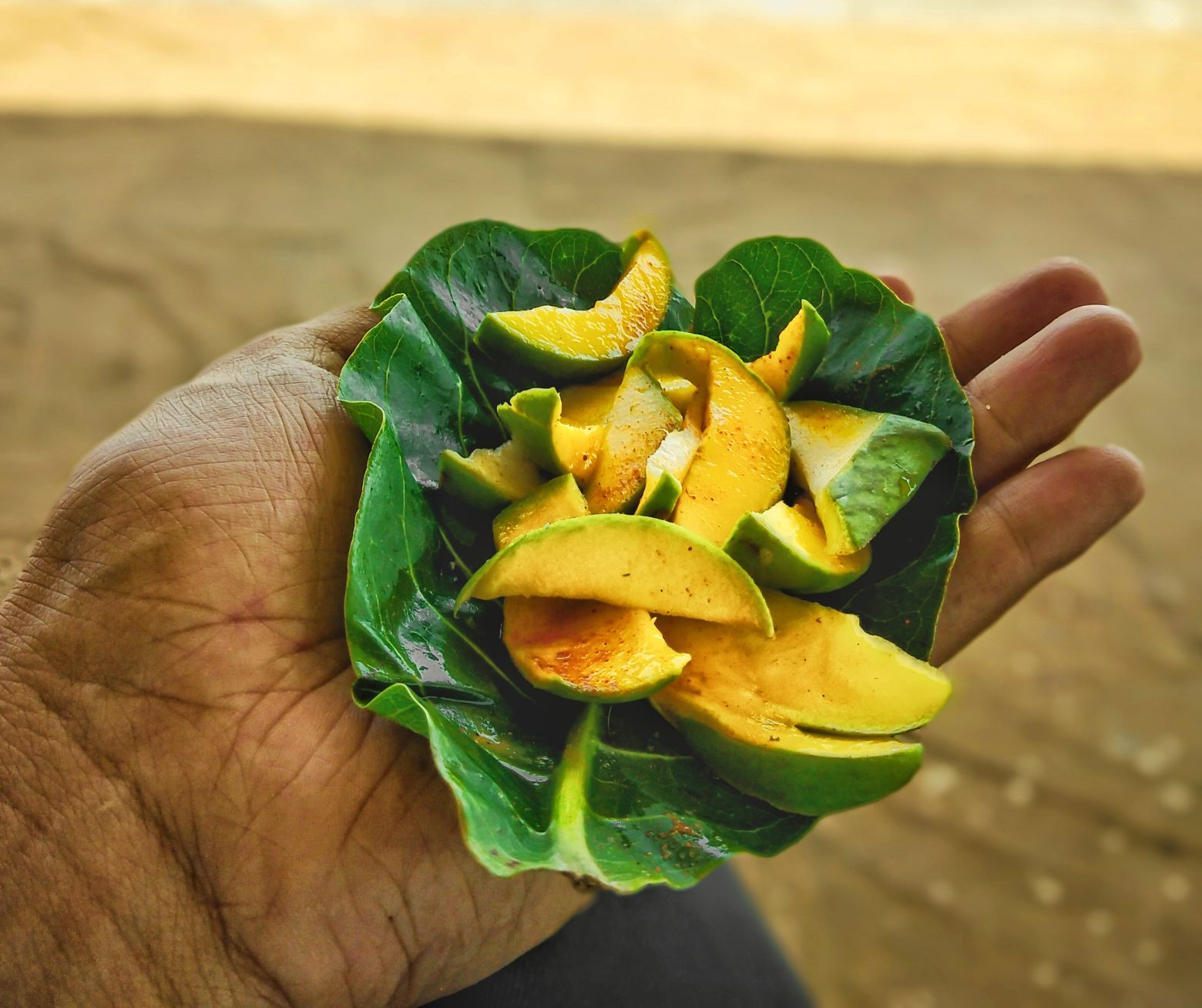
Courtesy: Bhataku’s Travel Tales!
It takes around 45 minutes to explore the entire Sea Fort. There are temples, stepwells, memorials and other remnants on the fort.
The fort walls stand at an average height of 6 to 8 meters and feature a broad parapet encircling the structure, reinforced with 17 bastions for defensive fire during enemy attacks. The entire fortification is constructed using massive stone blocks. There are two primary entrances—one facing the sea and the other leading to present-day Alibag town. The land-facing entrance, known as the “Maha Darwaza,” served as the royal family’s gateway. These doors, made of teak wood, are embedded with iron spikes at various points.
Intricate carvings of animals such as tigers, lions, and peacocks adorn the doors. The fort’s stone construction, remarkably done without any lime content, has contributed to its lasting durability. Despite being a sea fort, it houses large freshwater tanks within its walls for drinking water. Outside the southern gate, the fort has its own dock, with two English cannons positioned on the parapets, aimed at the open sea. These cannons remain intact and are accessible for tourists to view.
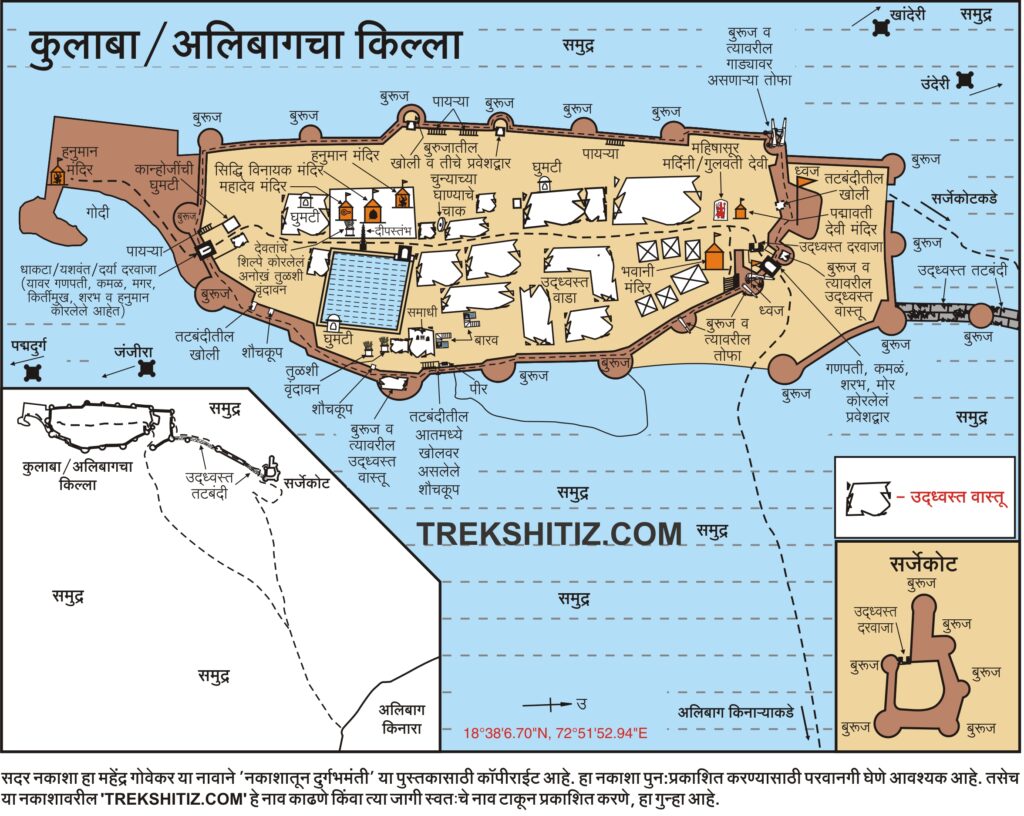
Source: www.trekshitiz.com
After passing through the ticket counter, there is an ASI office on the fort. The entrance opens to a pathway flanked by temples on both sides. I was amazed to see numerous houses within the fort, where residents not only live but also take care of its upkeep—an incredible sight! The temples on either side are dedicated to Hindu deities such as Narayana and Padmavati.
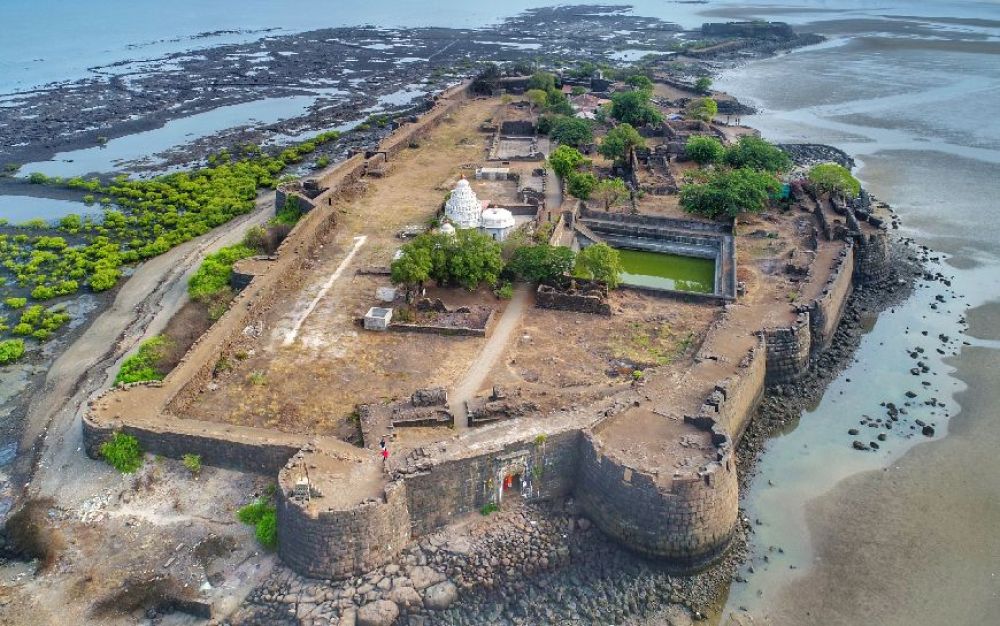
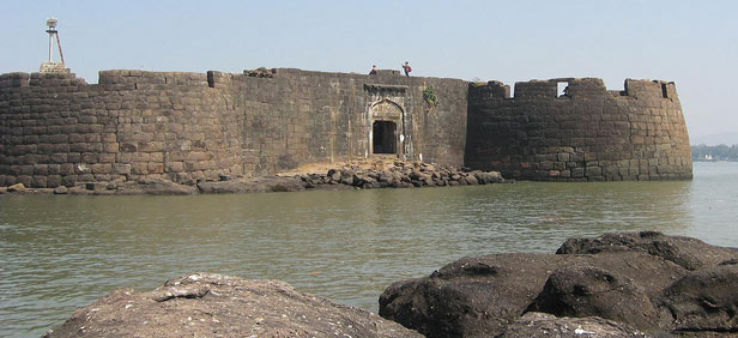
At the center, a grand temple stood prominently. As I walked toward it, something unusual on the left caught my attention—Pushkarini, a sacred pond typically found within temple premises, used for rituals and offerings during festivals and special occasions.
According to tradition, devotees are expected to bathe in this pond before seeking the Lord’s darshan. What surprised me most was that, despite being surrounded by the sea with its salty waters, the fort has a well that provides fresh water.
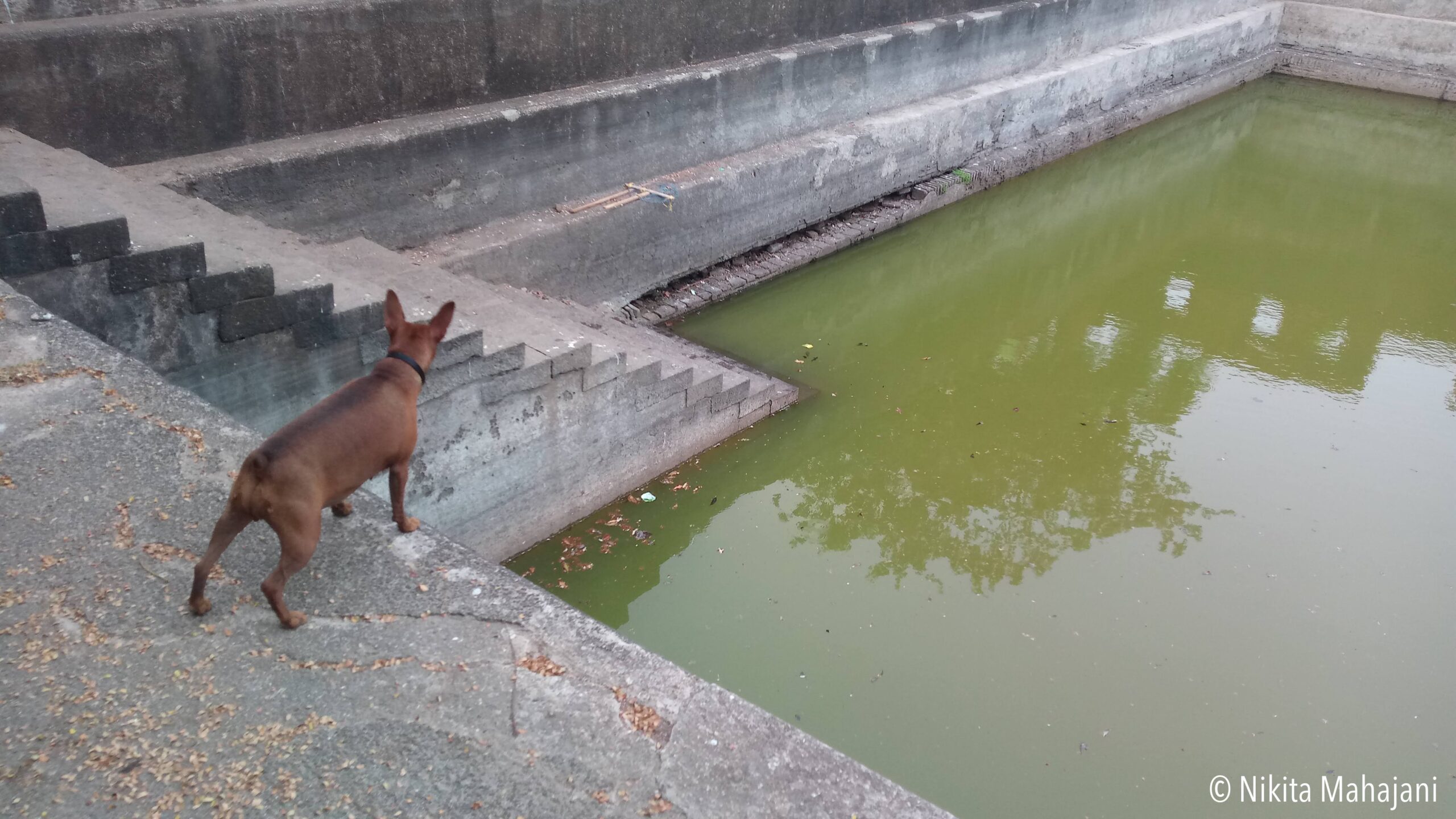
At the heart of the fort stands a magnificent Ganesh temple, built by Raghoji Angre in 1759. Inside the sanctum, the idol of Lord Ganesha is accompanied by Riddhi and Siddhi, his two consorts.
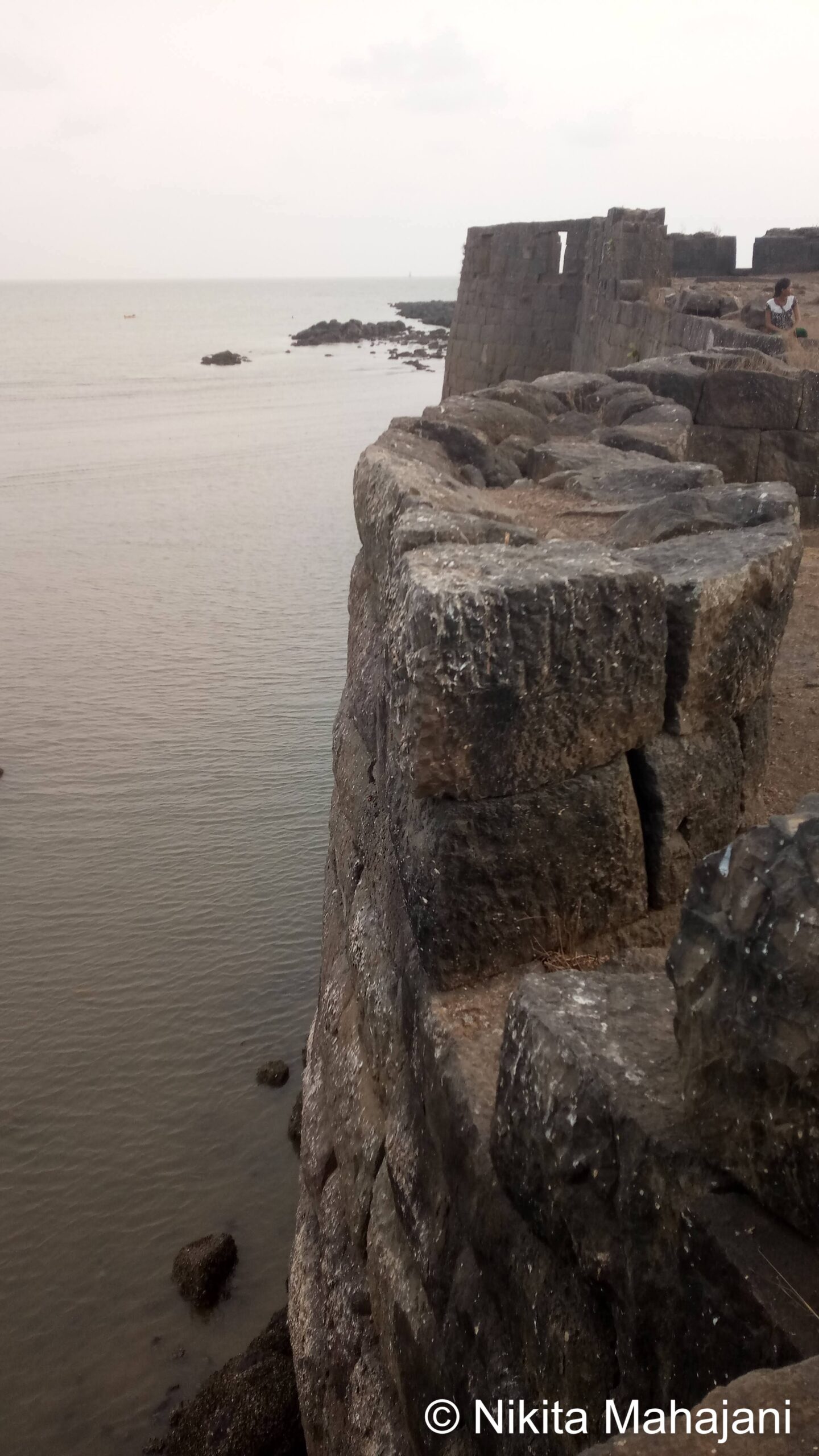
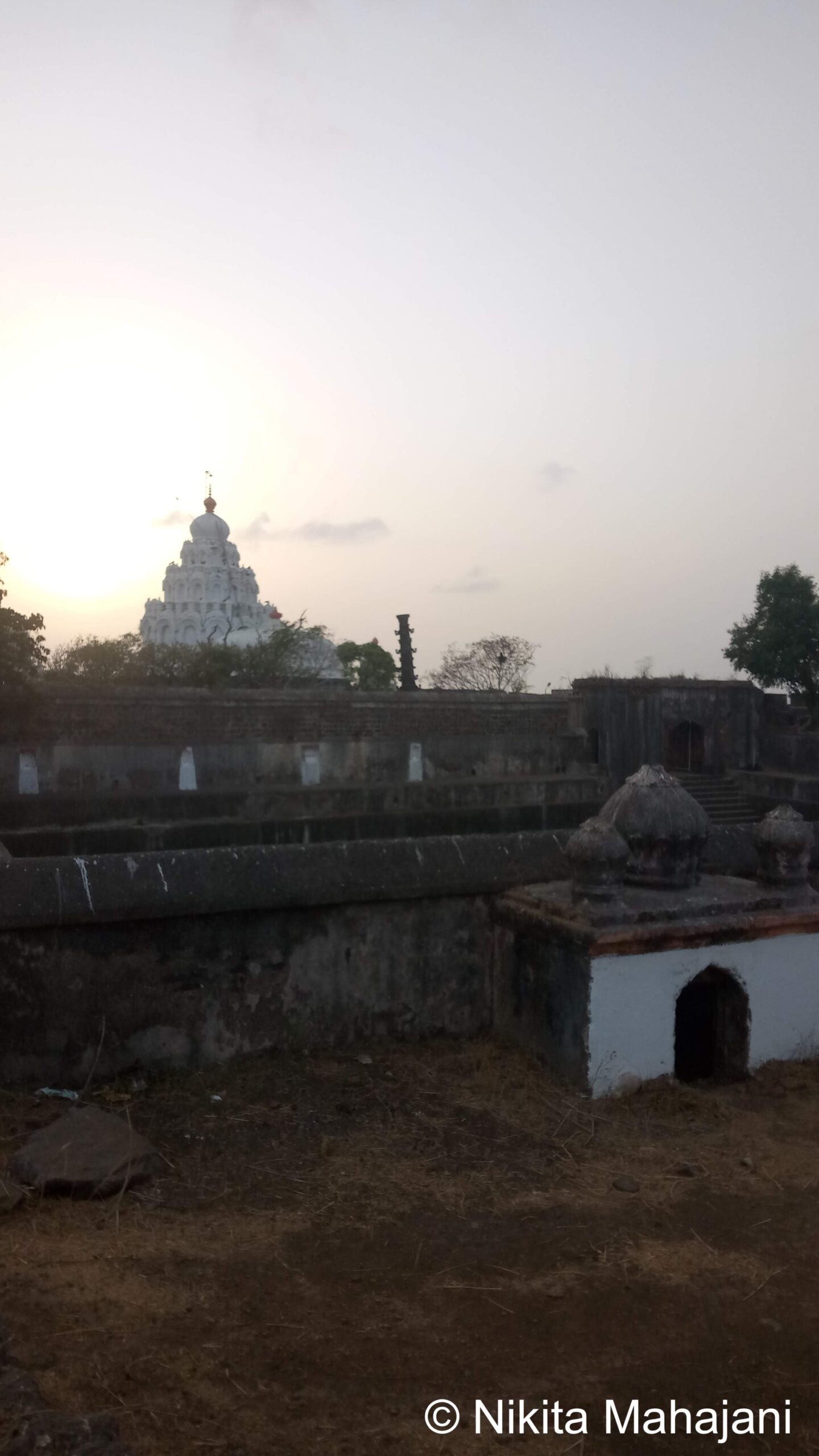
The fort was placed under the command of Darya Sarang and Mainak Bhandari, during whose leadership Kolaba Fort became the focal point of Maratha assaults on British ships. Its strategic location provided a significant geographical advantage, making it a key naval base for planning attacks against British forces.
Military enthusiasts should visit the northern wall of the fort to witness two English cannons mounted on wheels. An inscription on one of the cannons reads: “Dowson Hardy Field, Low Moor Ironworks, Yorkshire, England.”
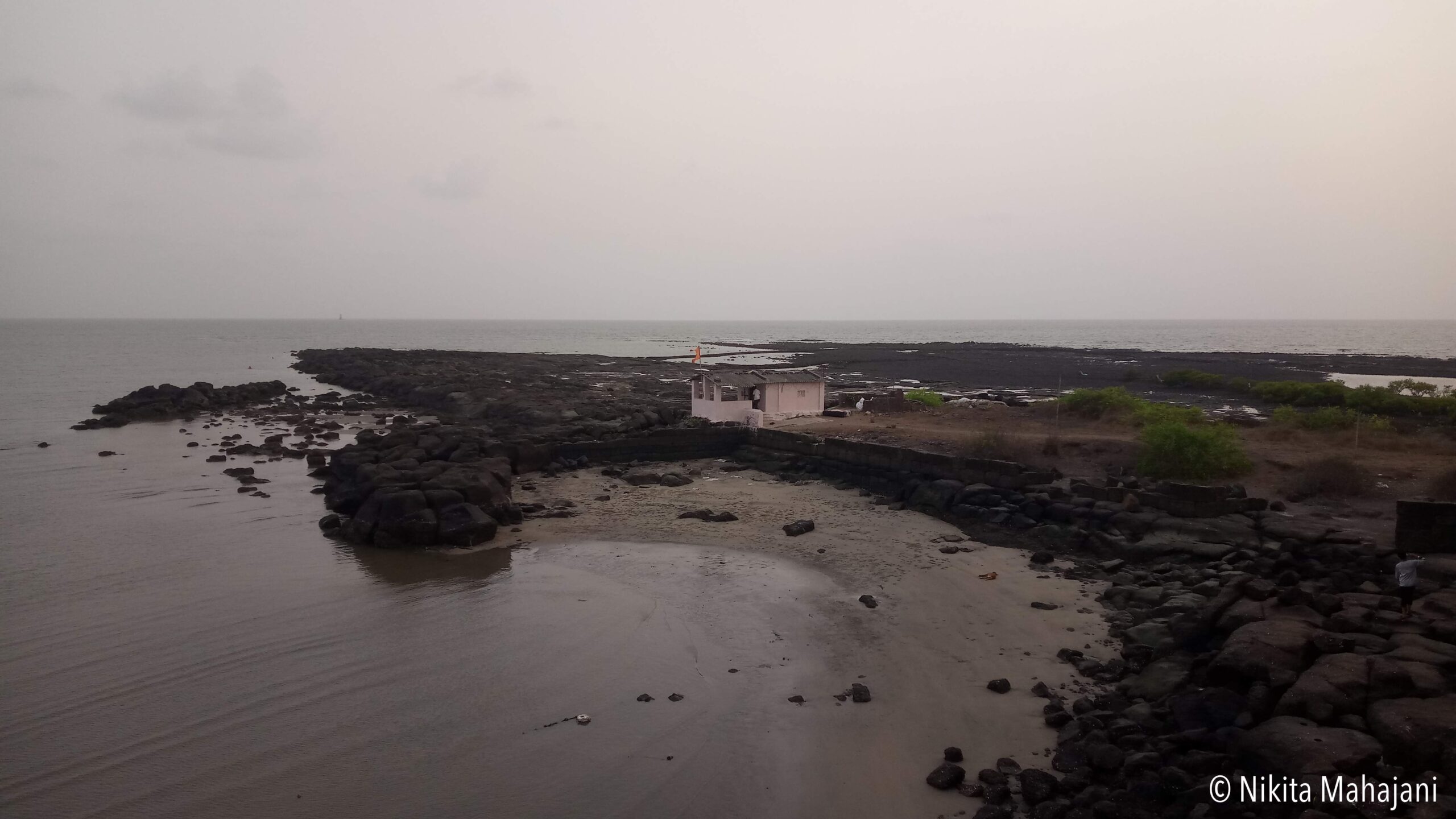
The history of the fort is truly fascinating. Its construction and subsequent reinforcement were completed by Sambhaji Maharaj following the passing of his father, Chhatrapati Shivaji Maharaj. Under the leadership of Kanhoji Angre, the Maratha navy launched relentless attacks on British ships, raiding and seizing their cargo. Despite multiple attempts, both the British and Portuguese failed to capture the fort. Historical accounts also mention that several fires broke out, causing significant damage to the estate within the fort.
Next, we moved on to Varsoli Beach, a peaceful spot where we enjoyed tea and snacks from nearby beach shacks while watching the sun dip into the horizon. There is paid parking available at Varsoli beach. There are no washrooms. There are lots of shacks under shady trees near the parking.
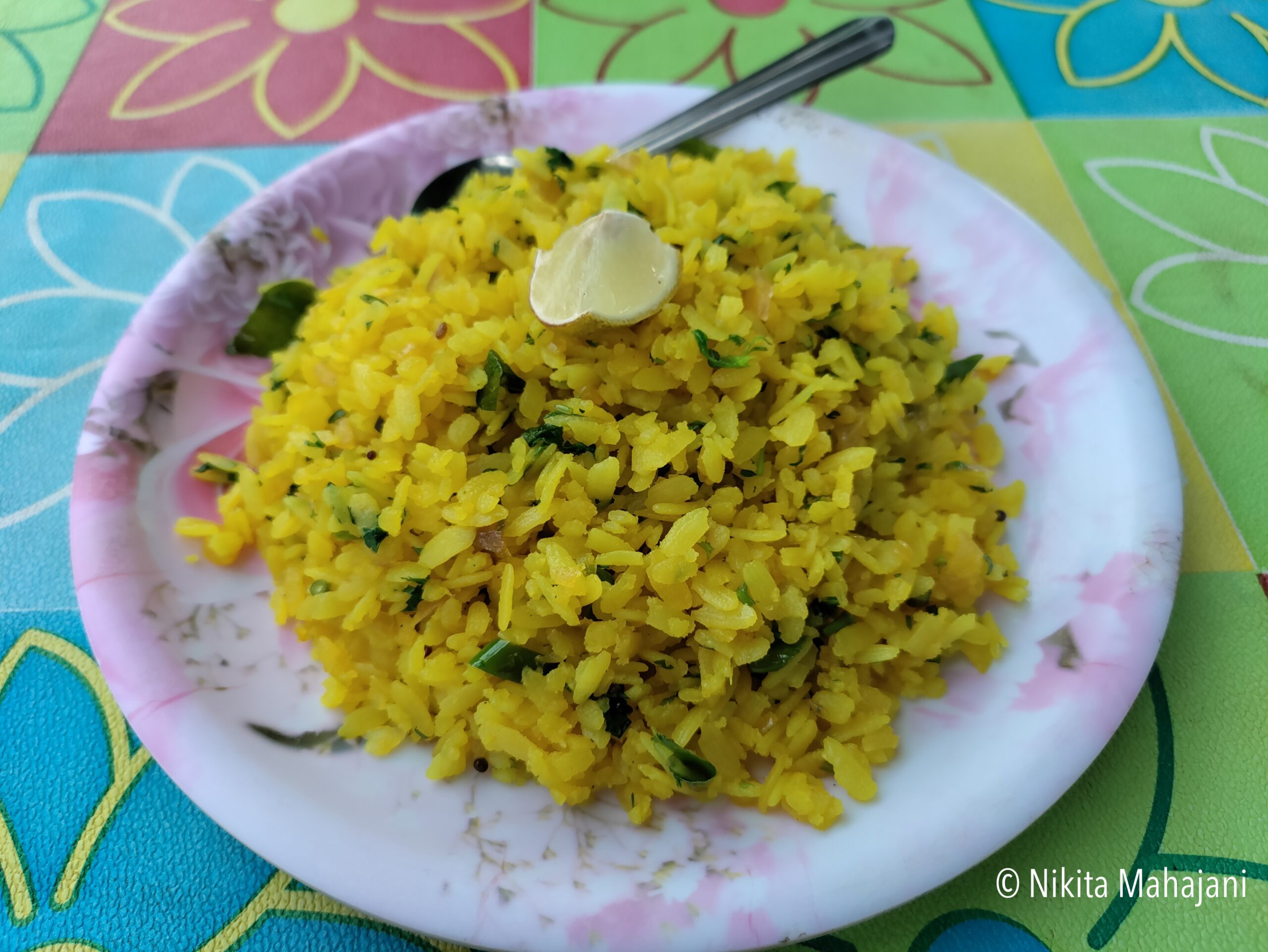
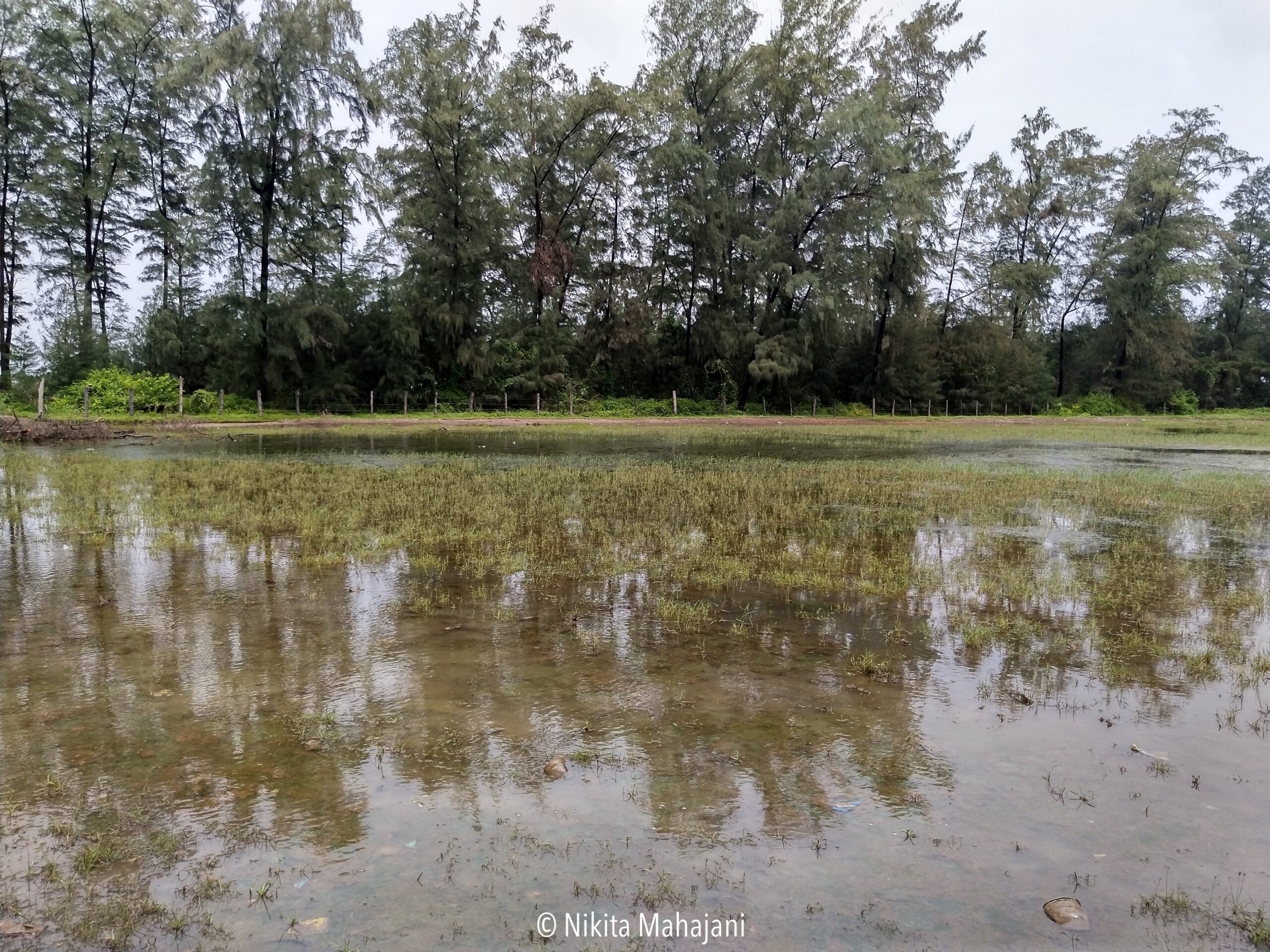
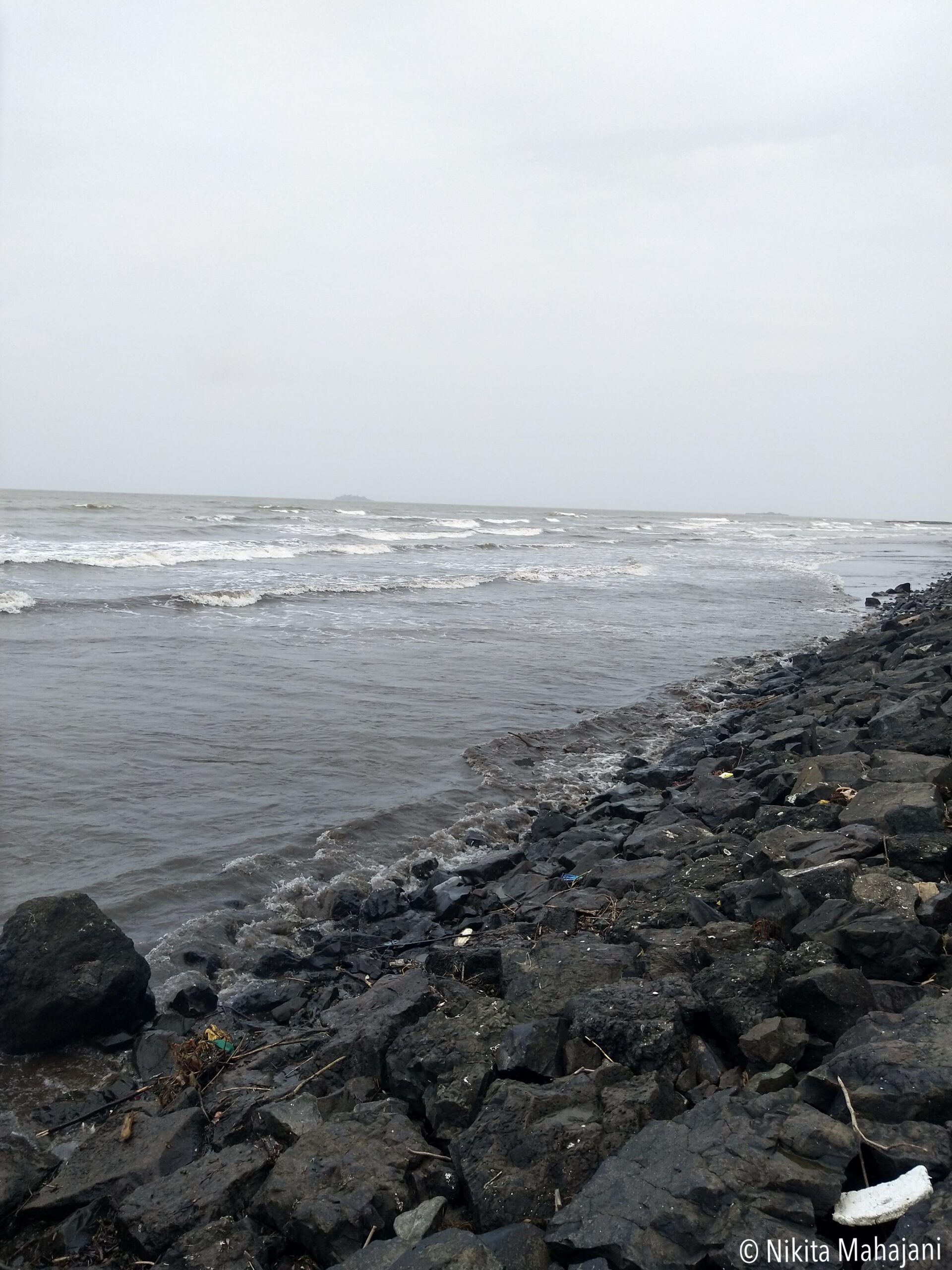
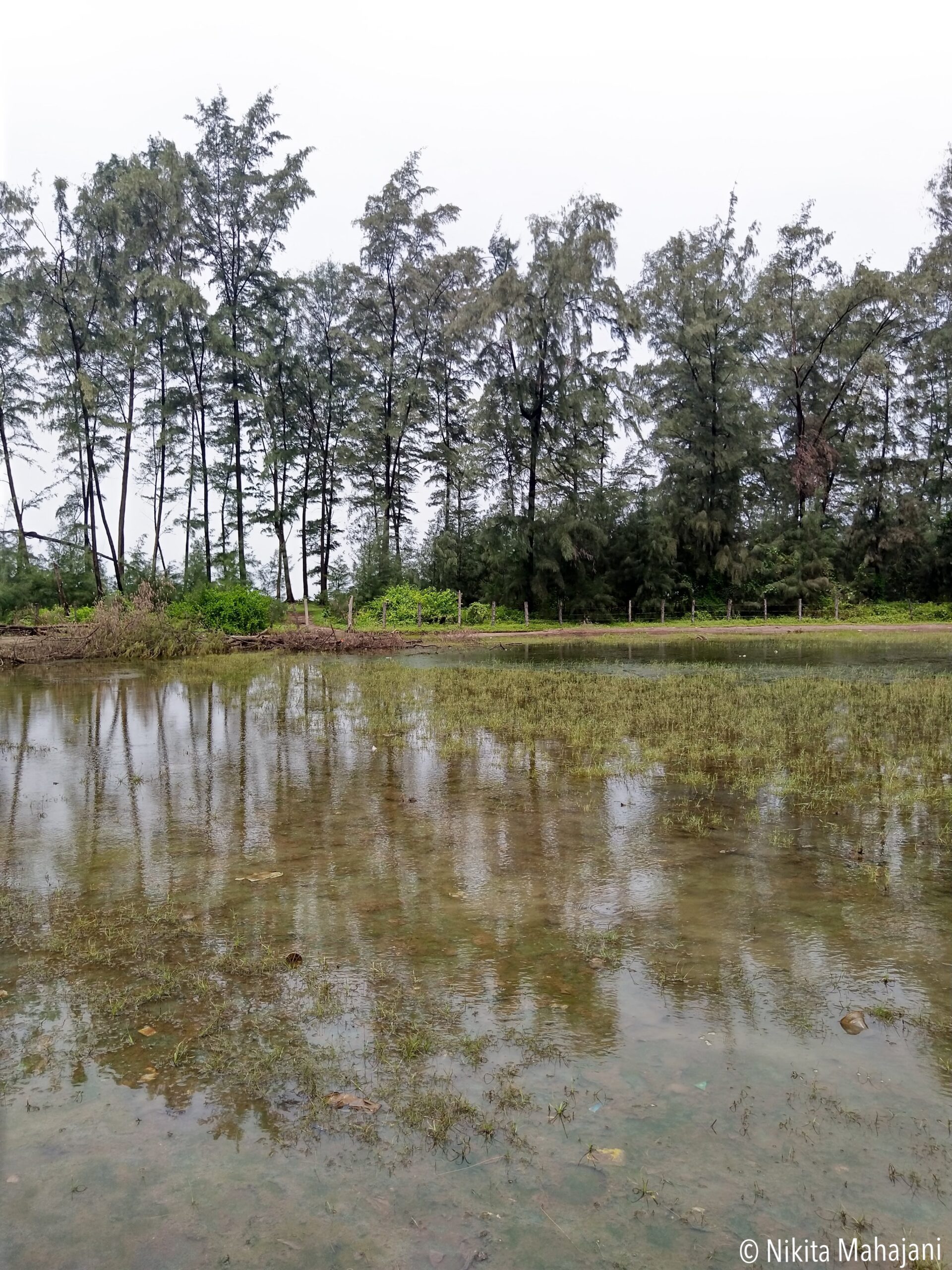
The serene evening ended with a delicious vegetarian meal at Suruchi Pure Veg Restaurant, a perfect conclusion to our first day. They allow pets on request
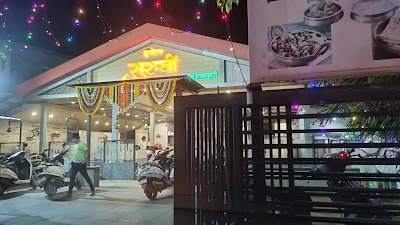
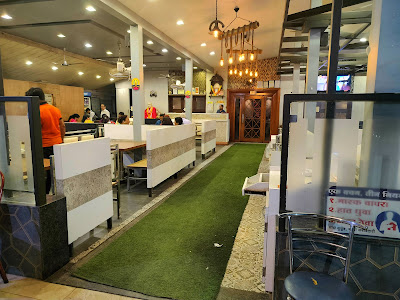
To read the blog on day 2 of Alibag click here
Where did we eat ?
Hotel Gayatri Garva
Suruchi Pure Veg Restaurant
First Old Original Mahesh Lunch Home
Hotel 4 1/2 Anandvan
Food Carnival
Which are the places unsuitable for pets ?
Murud Janjira Fort : The fort needs to be accessed by Ferry boats. Pets are strictly not allowed in the boats as well as on the fort.
